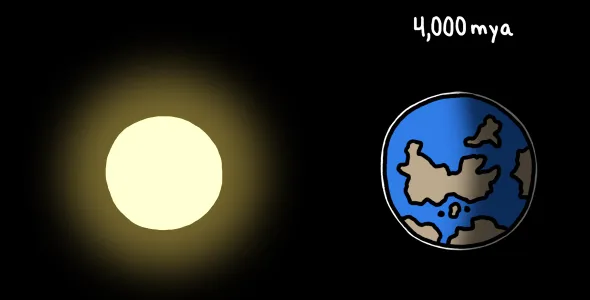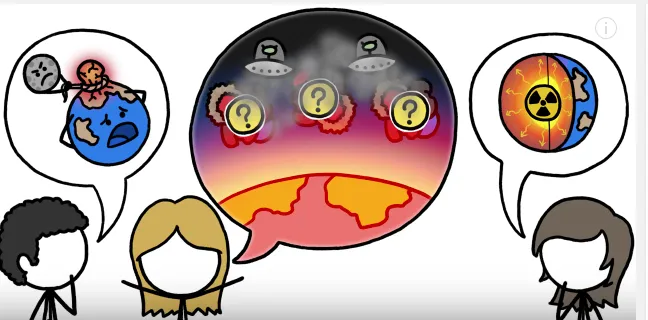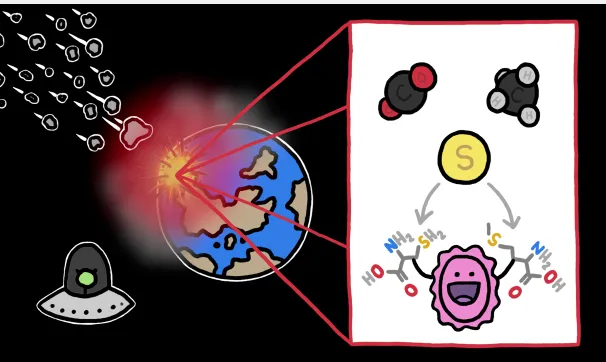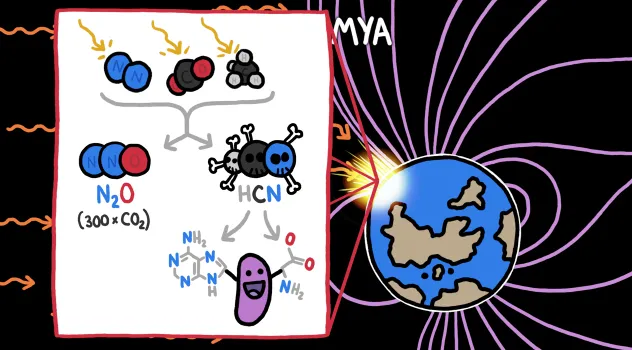In 1972, Carl Sagan and a colleague discovered something that’s come to be known as the faint young sun paradox.

According to stellar physics, our sun has been growing brighter over time, thanks to increasing hydrogen fusion in the star’s core. This means that the sun that shined on early Earth was roughly 25% dimmer than today’s sun, which should have kept our baby planet cool enough for ice at the poles to grow and reflect more sunlight and cool the planet Further producing a literal snowball effect and turning Earth into a big ice cube.
https://ipfs.pics//ipfs/QmdqKbcco3c7t57DLouN1hUbnX1VQkbaJ2t2CtTA5ZZSCV
BUT: according to rock and fossil evidence, ancient Earth was actually a melty, warm, watery haven for life, where simple single-celled organisms developed and thrived. Hence the paradox how could the sun be dim but the earth warm? Scientists have proposed a range of possible explanations, but the most likely one is that Earth’s early atmosphere included one or more ultra-insulating gases that kept its surface unseasonably toasty.

We still don’t know for sure what those gases were or where they came from, but scientists have been toying with an intriguing possibility: that whatever created Earth’s mega-greenhouse effect also supplied key ingredients for life. One hypothesis is that a constant barrage of rocky debris left over from the creation of the solar system melted sizable chunks of earth, releasing greenhouse gases like carbon dioxide and methane, and drawing sulfur an essential component of some amino acids up to the surface.

Another out-of-this-world hypothesis points to the sun itself. Magnetic storms on the sun’s surface unleash streams of high-energy particles into space. Today, these so-called solar winds can disrupt Earth’s magnetic shield enough to penetrate the atmosphere and interact with gases, giving rise to the Auroras.

But back when our sun was a baby, it threw much wilder tantrums, hurling frequent streams of high-energy particles that interacted with Earth’s primordial atmosphere to create large amounts of two gases: nitrous oxide, a greenhouse gas 300 times as powerful as carbon dioxide, and hydrogen cyanide, a poison that can, ironically, also help produce some basic building blocks of life.

Whatever the real story, it’s safe to say that our early Earth somehow managed to create a perfect home for life under the faint young Sun.And it’s also safe to say that, as our sun continues to burn ever brighter into the future, Earth will snowball in another, hotter, direction, and eventually water and life will boil away under the bright old sun.
